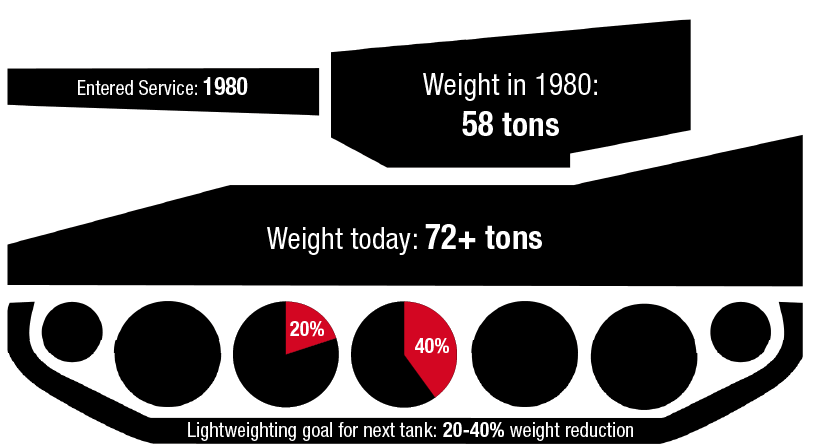
January 2, 2018
Lighter Materials, Lighter Automobiles
Magnesium
Carbon fiber composites
Aluminum and Al matrix composites
Titanium
Glass fiber composites
Advanced high-strength steel
High-strength steel
30-70%
50-70%
30-60%
40-55%
25-35%
15-25%
10-28%
In the short term, replacing heavy steel with high-strength steel, aluminum, or glass fiber-reinforced polymer composites can decrease component weight by 10-60%. Longer term, materials such as magnesium and carbon fiber-reinforced composites could reduce the weight of some components by 50-75%.
— U.S. Energy Department Vehicle Technologies Office (VTO)
5 Billion Gallons
Using lightweight components and high-efficiency engines enabled by advanced materials in one quarter of the U.S. fleet could save more than 5 billion gallons of fuel annually by 2030.
— U.S. Energy Department Vehicle Technologies Office (VTO)

The Department of Energy’s Carbon Fiber Technology Facility has a capacity to produce up to 25 tons of fiber per year.
— Oak Ridge National Laboratory, 2017
The M1 Abrams Main Battle Tank

The Abrams tank gained weight via additional armor and having its 105-mm gun replaced with a 120-mm gun.
— U.S. Army Tank Automotive Research & Development Center (TARDEC)
 Blast Off the Weight
Blast Off the Weight
$10,000 per pound
It costs $10,000 to put a pound of payload into Earth orbit. NASA’s goal is to reduce the cost of getting to space to hundreds of dollars per pound within 25 years and tens of dollars per pound within 40 years.
— NASA Marshall Flight Center, 2008
$1,000 per pound
The SpaceX Falcon Heavy rocket will be the first-ever rocket to break the $1,000-per-pound-to-orbit barrier, less than a tenth as much as the Shuttle.
— SpaceX press release, July 13, 2011
$100-$500 per pound
SpaceX CEO Elon Musk estimates the Falcon Heavy could achieve orbital payload costs as low as $100 per pound, depending on the flight rate.
— Popular Mechanics interview, Feb. 7, 2012
9,920-23,148 pounds
The Ariane 6 launch vehicle is expected to be on the launch pad by 2020, and will feature two variants capable of placing 4.5 to 10.5 tonnes in a geostationary transfer orbit (GTO). SpaceX pegs its GTO capabilities at 18,300 pounds for the Falcon 9 and 58,860 pounds.
for the Falcon Heavy.
— European Space Agency, SpaceX, 2017
$109 Million
Cost of an entry-level ULA Atlas V launch, not including the value of insurance, schedule certainty and orbit optimization.
— Rocketbuilder.com, United Launch Alliance
$62 Million, $90 Million
Cost of Falcon 9 and Falcon Heavy rocket launch services, respectively, not including discounts for contractually committed, multi-launch purchases.
— SpaceX.com
Testing Lightweight Limits
3,257 pounds
The Solar Impulse 2 flew 40,000 km without fuel. The 3,257-pound solar plane used sandwiched carbon fiber and honeycombed alveolate foam for the fuselage, cockpit and spars.
— SolarImpulse.com, 2016
404,600 pounds
The weight of a Boeing 747-400, which entered commercial service in 1989, after wing weight was reduced via high-strength aluminium alloys and composite materials. The new Boeing 787-10 promises 25% better fuel and emissions than the airplanes it will replace, thanks in part to being 50% composite by weight.
— Aerospace-Technology.com; Boeing.com, 2017
Subscribe to our FREE magazine, FREE email newsletters or both!
About the Author
DE’s editors contribute news and new product announcements to Digital Engineering.
Press releases may be sent to them via [email protected].






